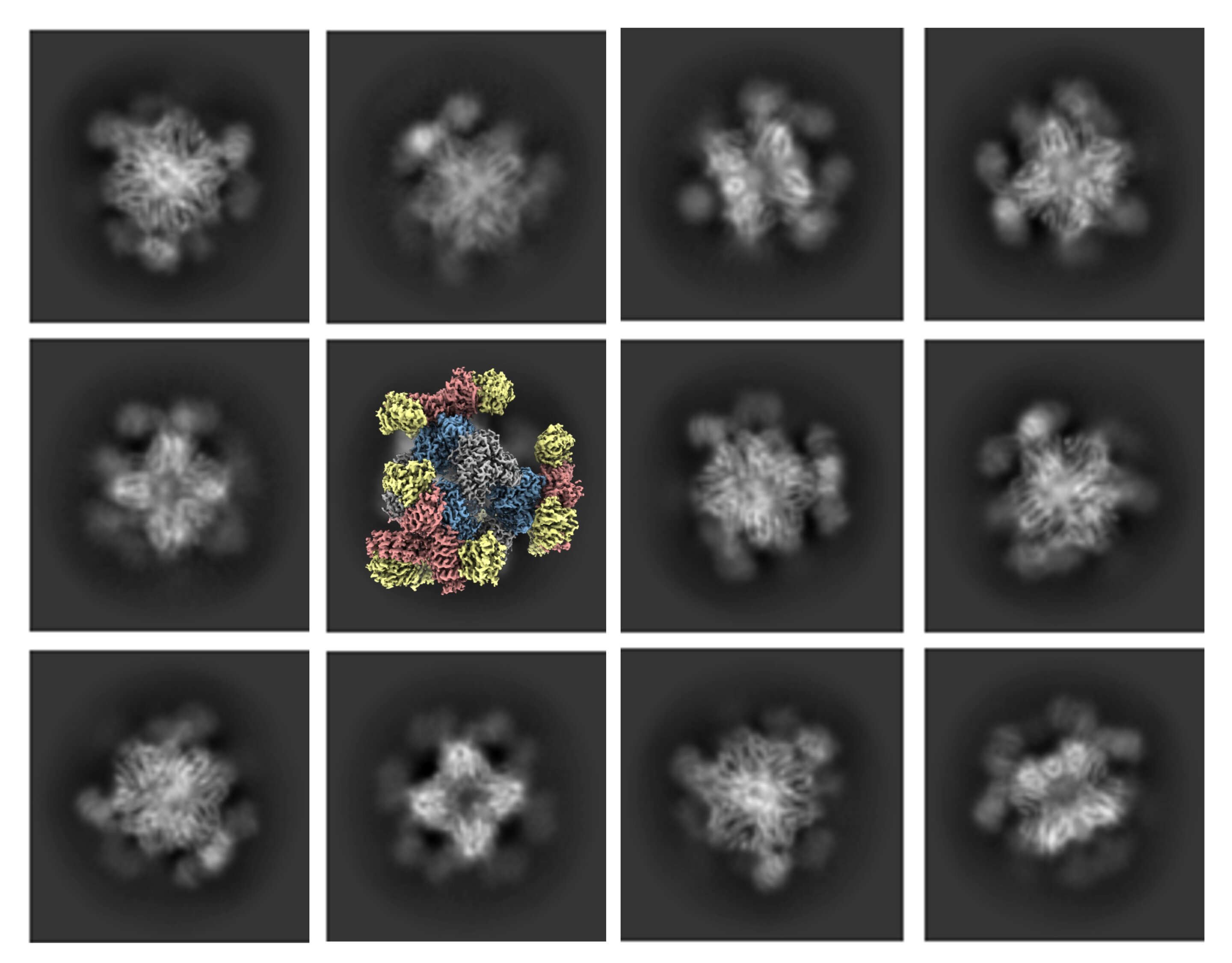The scientists who received the 2017 Nobel Prize in chemistry were honored for their development of a technique called cryo-electron microscopy, or cryo-EM. The technology was revolutionary because it enabled scientists to see the atomic structure of biological molecules in high resolution.
But cryo-EM still had a catch: It was only effective for imaging large molecules.
Now, UCLA biochemists, working with pharmaceutical industry scientists, have developed a solution that will make it possible for cryo-EM to acquire high-quality images of smaller protein molecules, too. The scientists engineered a 20 nanometer, cube-shaped protein structure, called a scaffold, with rigid tripod-like protrusions that hold the small proteins in place.
The scaffold can be digitally removed from the picture when the imaging is being processed, leaving a composite 3D image of just the small protein scientists are analyzing.
Small and medium-sized proteins are a hot point for research on potential new drugs that might one day be used to fight some of the most intractable human illnesses. The advance, which was tested on a protein that scientists are studying for its possible use in cancer treatments, can be customized for almost any small protein. Researchers expect that expanding cryo-EM’s imaging capabilities will help them identify specific locations on proteins that they can target for therapeutic purposes.
2023-09-27 08:48:03
Article from phys.org rnrn
